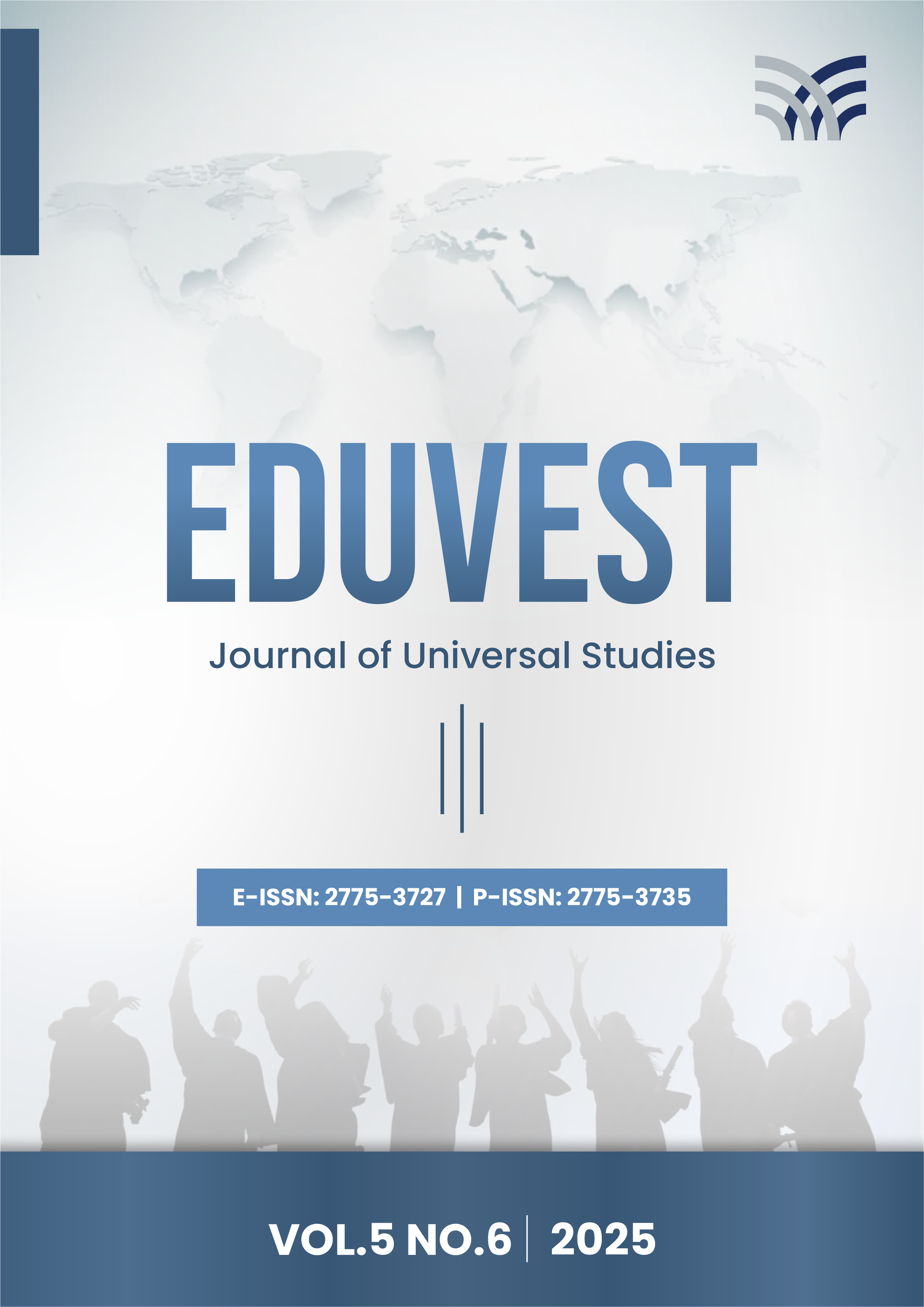Analysis of The Network Density of Rainfall Stations and Hydro - Meteorology of Citanduy Watershed, West Java Province
DOI:
https://doi.org/10.59188/eduvest.v5i6.51305Keywords:
Hydrological Network, Rainfall Station, Kagan Method, WMO Standard, Watershed ManagementAbstract
This study aims to analyze the density and effectiveness of hydrological stations in the Citanduy Watershed, West Java, using both the Kagan and World Meteorological Organization (WMO) methods. The availability and strategic distribution of Rainfall Stations (PCH), Water Level Stations (PDA), and Climatology Stations are crucial for the accuracy of hydrological data used in flood management, infrastructure development, and water resource planning. The research utilizes a quantitative approach with spatial analysis methods, including Thiessen Polygon and correlation models. The findings indicate that the 24 existing rainfall posts generally meet WMO standards in terms of coverage, but based on the Kagan method, 4 PCHs require closure or relocation to optimize data quality. Furthermore, although 33 water level stations exceed WMO’s minimum requirement of 4–12, the spatial density is uneven, and only 2 climatology stations are active, meeting the lower threshold but signaling the need for expansion. This study is novel in integrating WMO and Kagan density methods to assess and refine post placement across a single watershed, leading to more accurate hydrological monitoring. In total, the results recommend the refinement of four PCHs and the relocation or optimization of 16% of existing rainfall stations. This research contributes to optimizing station placement, improving hydrological data reliability, and enhancing the efficiency of monitoring networks for future watershed management.
Downloads
Published
How to Cite
Issue
Section
License
Copyright (c) 2025 R. Wulan Dewi Kusumawati, Sri Sangnawati, Hari Nugrohi

This work is licensed under a Creative Commons Attribution-ShareAlike 4.0 International License.











